Female Type Designers Conversation #2
Five of our type designers talk about work-life balance, studies, inspiration, female representation and community in the type design field. A conversation held online in May 2025 between Antonia Cornelius, Olivia Wood, Julia Uplegger, Lisa Fischbach and Yaprak Buse, hosted by Laura Flethe.
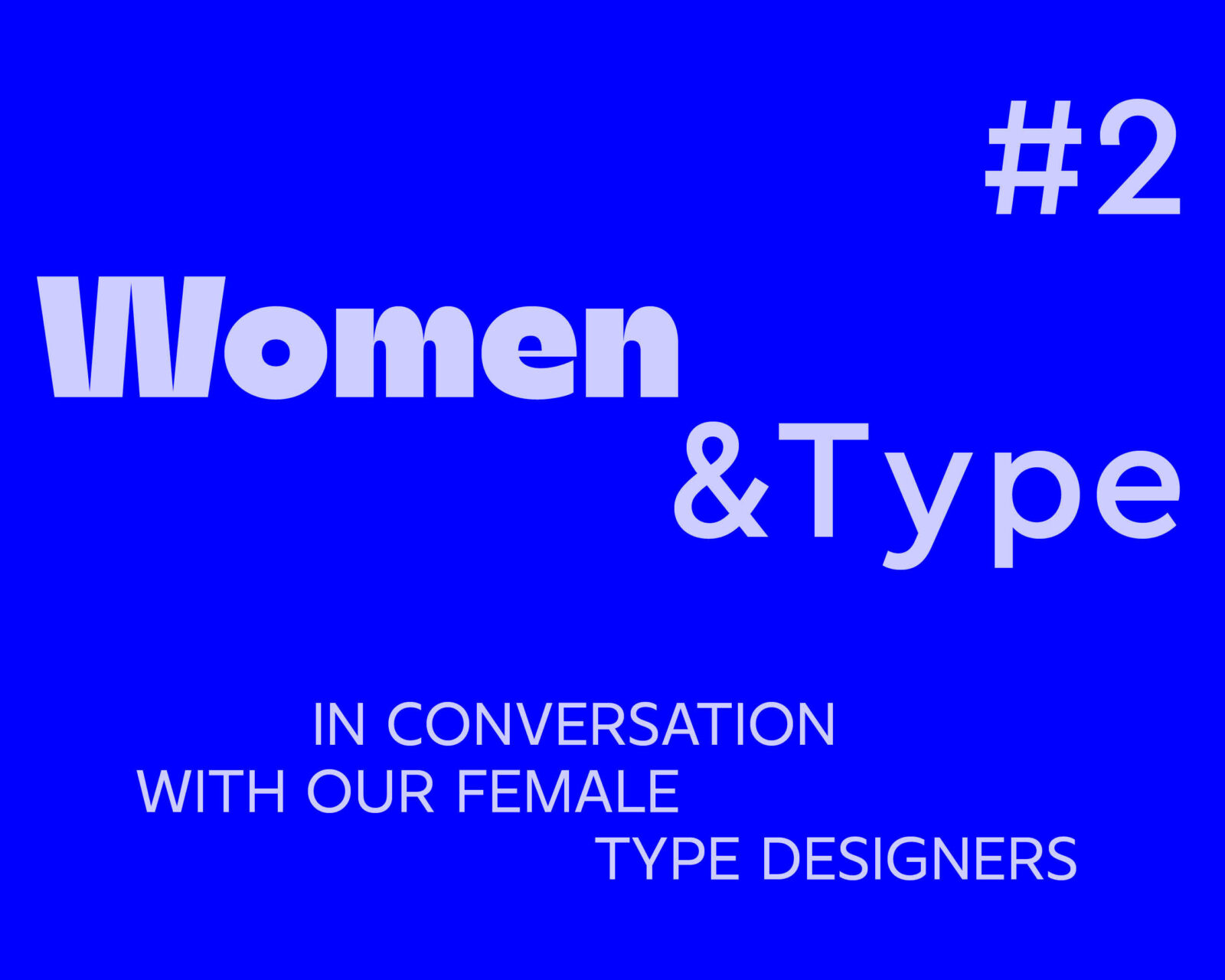
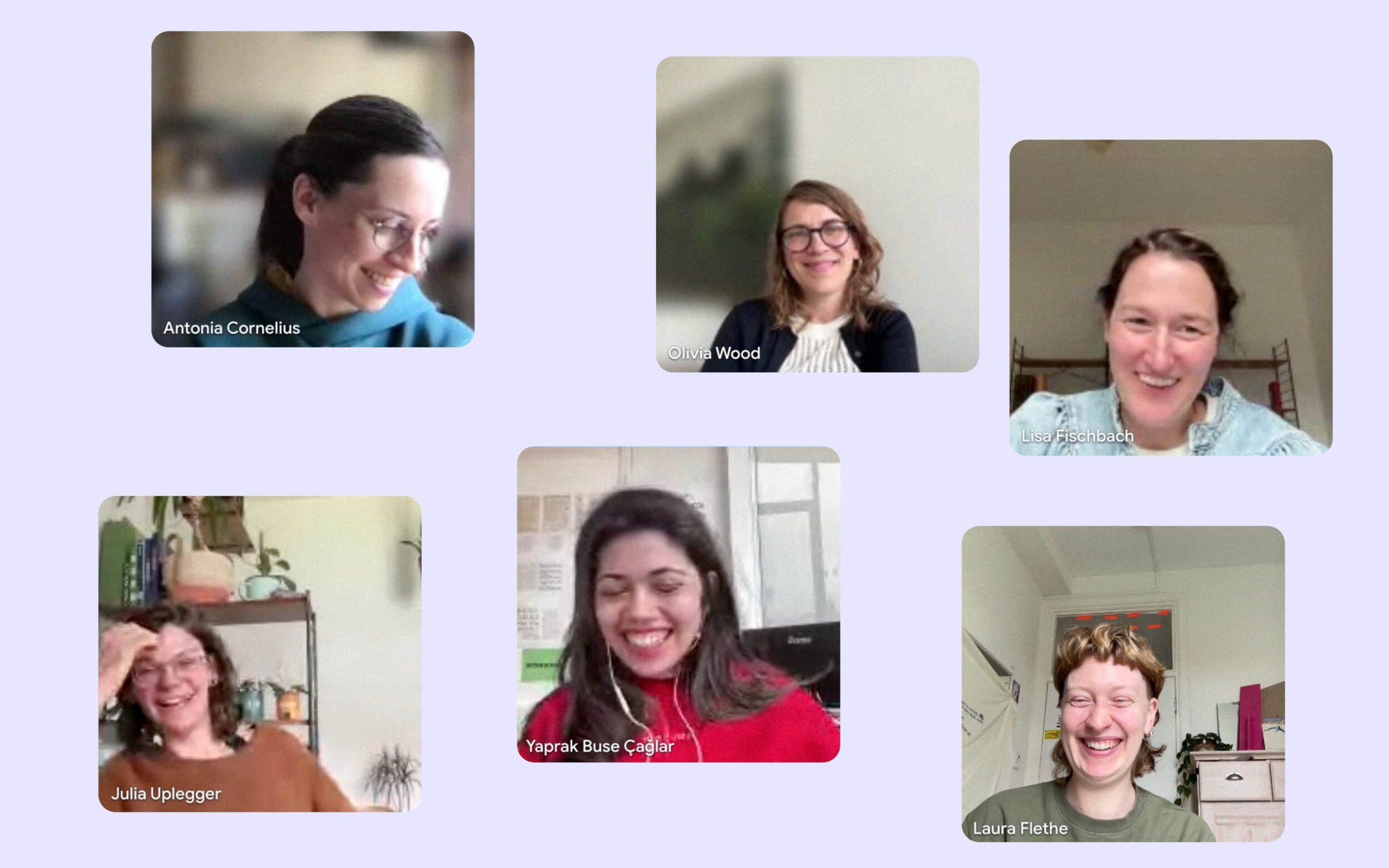
Antonia Cornelius, a designer, researcher, type designer, lecturer and author with a special interest in legibility and readability.
Olivia Wood, a German-Canadian graphic designer, entrepreneur living in Berlin and co-founder of Ligature-Type together with her partner Alexander Rütten.
Julia Uplegger, a freelance communication designer based in Leipzig with a passion for typography, book and typeface design.
Lisa Fischbach, a type designer, teacher and managing partner at TypeMates, based in Wuppertal
Yaprak Buse, a turkish type designer based in France, former TypeMates intern and EsadType graduate.
Laura Flethe is a visual & research-based artist and graphic designer at TypeMates since 2022.
This is part two, if you haven't read part one yet, follow this link.
What are your thoughts on female representation in type design education?
Laura: When I was studying in my bachelors, I had this moment of understanding that actually most of the classes we had were held by men. And then most of the contents, or the designers we would talk about were men as well. Then I realized my Instagram feed and other references we talked about as students were mostly by men. And I was very shocked by this realization and that there was actually very little female representation in terms of contents and role models in the studies — not even to mention people of color, non-western or gender non-conforming people. I started thinking more of how I can create representation, or how I can find these role models. One way to counter this was trying to use more fonts by female type designers.
Lisa: I find this very difficult, because the generation of men in education needs to retire before the rest can fill the shoes. And they are coming, we are coming. So I think in that sense there's a lot of movement in that direction, which is good and important. And also we need to give it a bit of time to get more diversion. So what you are saying is, “Okay, I'm aware that I'm only taught by male perspectives — or let's say very similar perspectives.” And then you go out and search for the other views. That is the best thing you can do. I thought once: How does my design differ from male design or design of different people – am I too chaotic, do I need to become more rational? And then in the end, we are all individual people and all this is valid and it’s good to have a voice and an own opinion. If nobody's there, I think you then need to look for that somewhere else or you need to be that person that is then there.

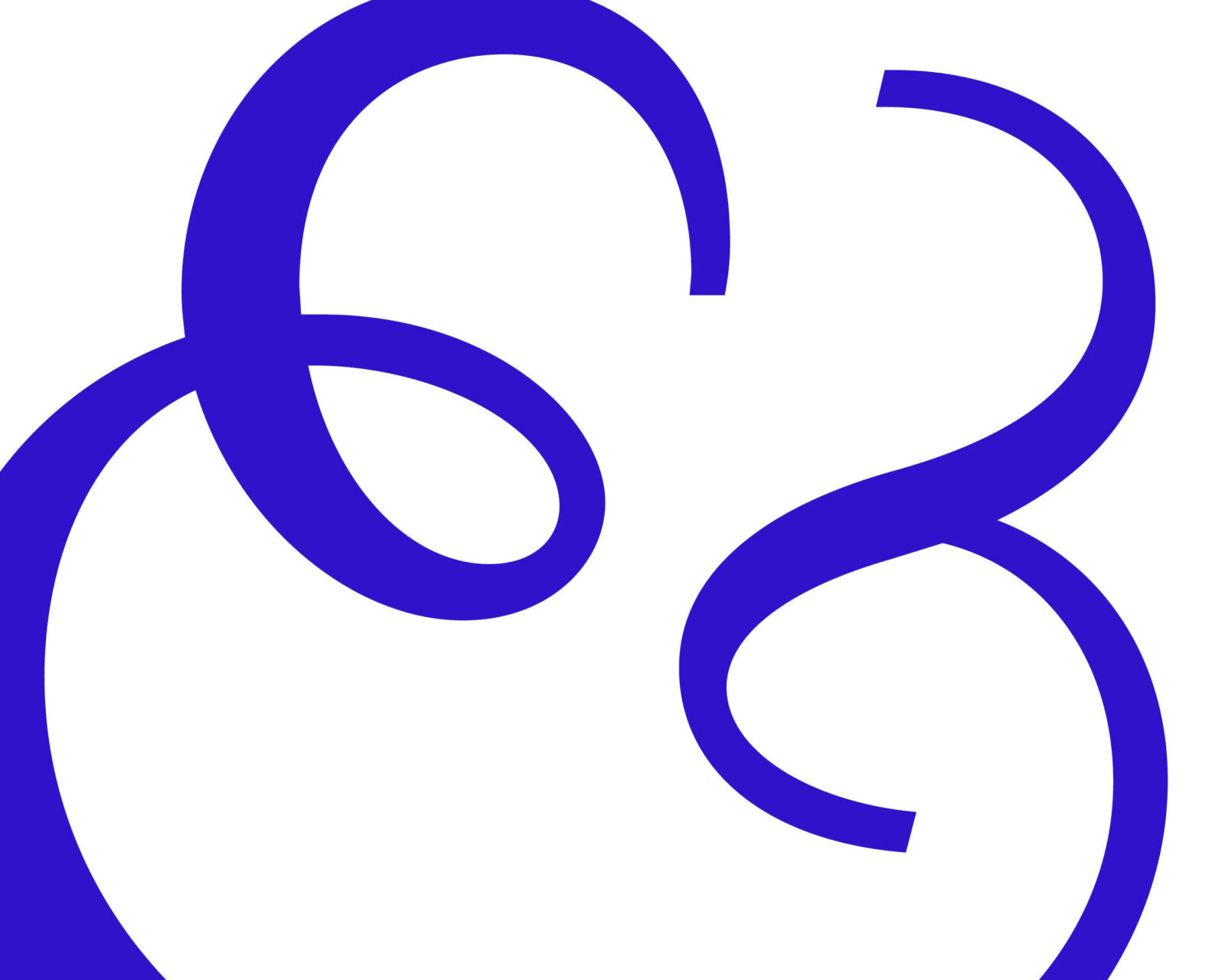
Relais Display by Olivia Wood & Alexander Rütten
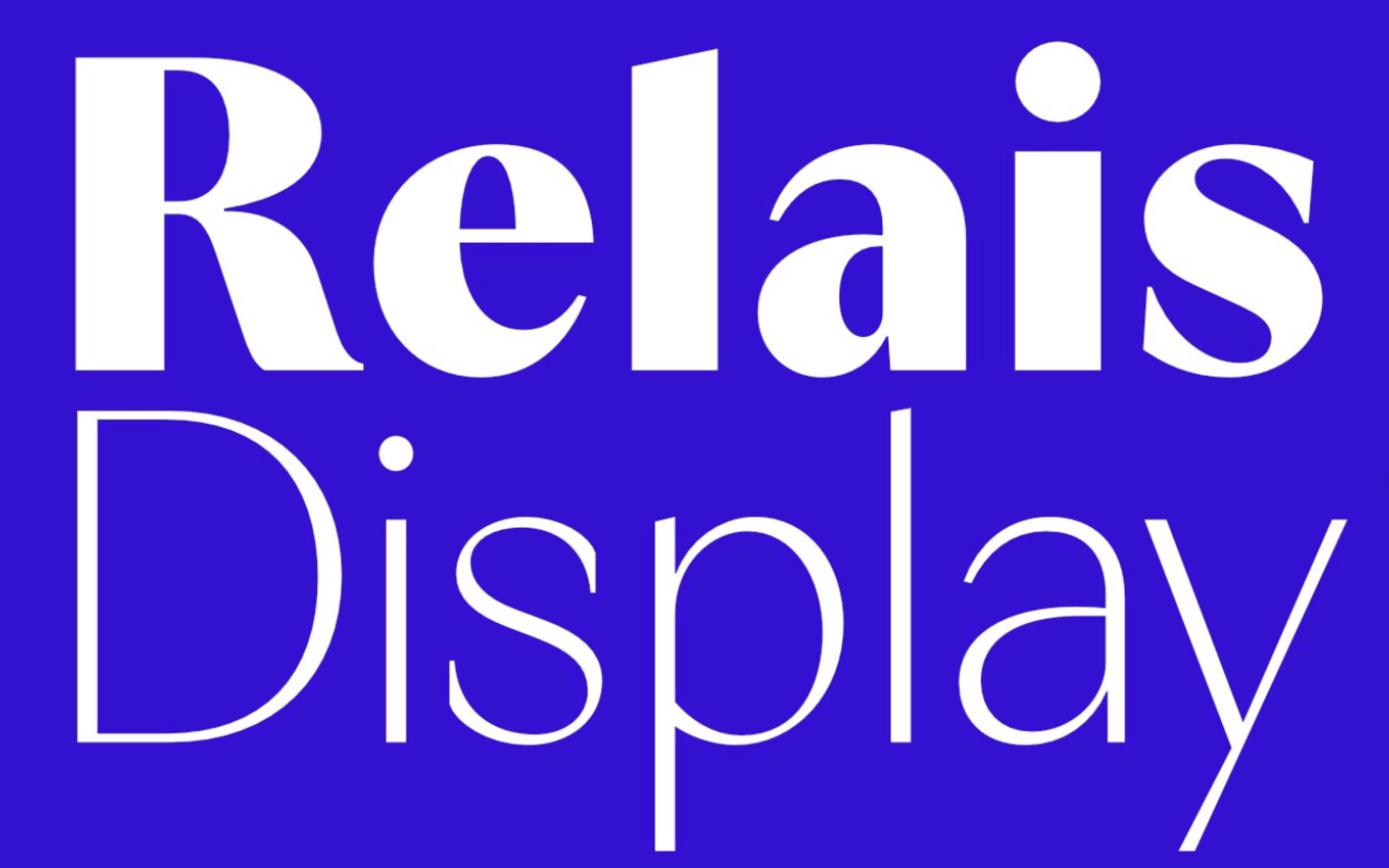
Relais Display by Olivia Wood & Alexander Rütten
Olivia: When I was studying, the only two female type designers that were talked about in my typography class, which was excellent, were Carol Twombly and Susanna Leacock and that was it. And I think things have improved vastly. There are all kinds of projects showing women who have been working in type since 1900, in a completely different fashion, and they were just not visible. And so it's not like there were no women in type, it was just that they were not visible. And even in the late 90s, my professor had two women in his repertoire of interesting type designers that he was talking about. So, I think that has changed radically. And, I think that's great, but it's not enough.
Last year and this year, we have had interns from Estienne in Paris who are doing the type master, both girls. They're in their early 20s and it's really great to see how things have changed. It's that I realize that I know so little compared to them, just because of the way I was educated. It's great to see how normal it is for them to have a more complete picture of women in type as well.
Since last year, I've been teaching the same job that Natalie Rauch
does, and I'm sharing a teaching job with her at a private academy in
Berlin. There are hardly any guys there. This is quite a female
dominated area. In the meantime I think the developments are good in the
sense that visibility is increasing. I've seen a span of this evolution
and I think it's going in a good direction.


La Typothèque by Bye Bye Binary
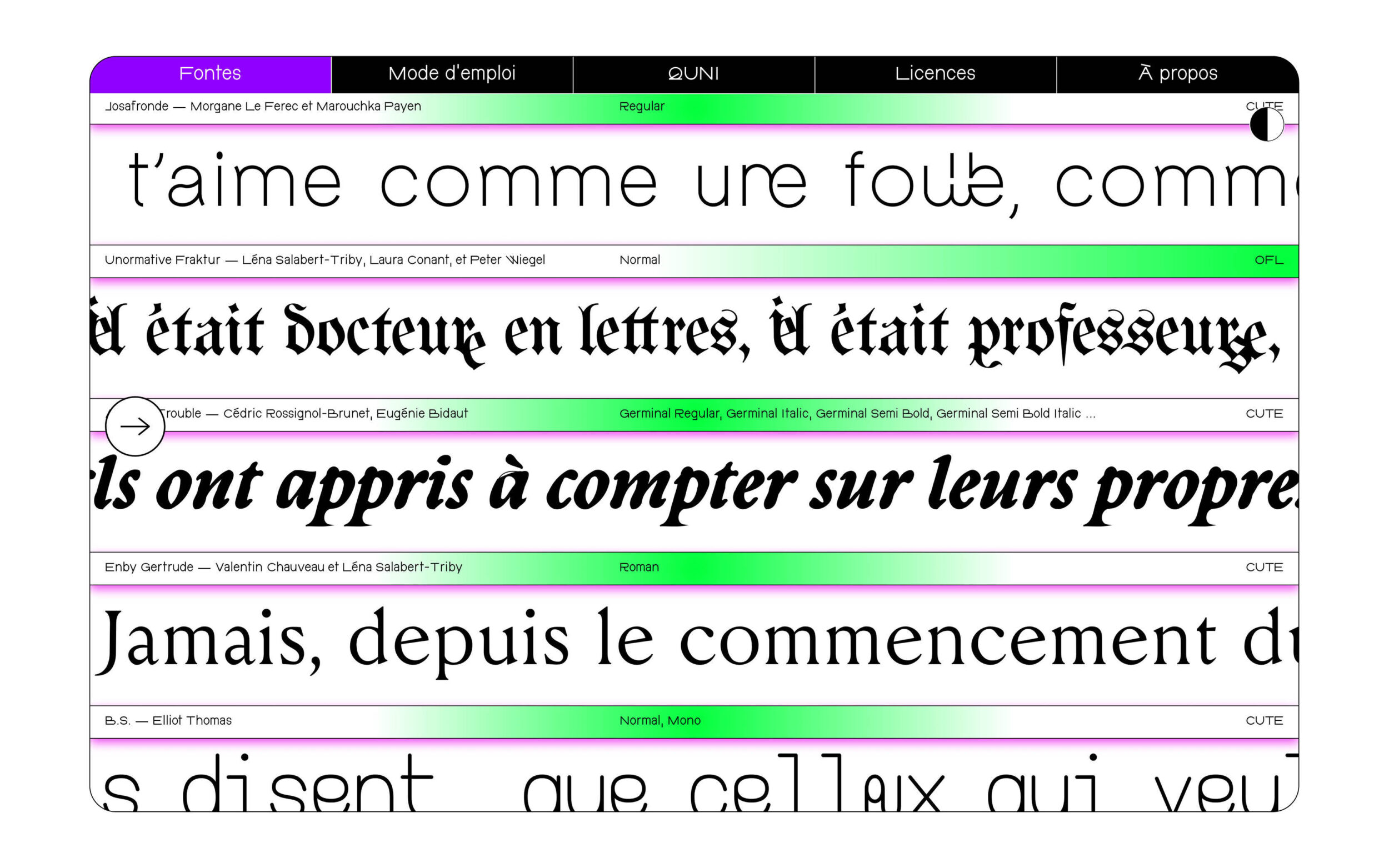
La Typothèque by Bye Bye Binary
Yaprak: I think it is kind of a shame that we are not even given a chance to be a part of this. In my experience we are very underrepresented – the non-male people in general. In my experience in Turkey, for example, I am not recognized at all. And it's a shame that I'm doing something and no one is even caring to look at what I'm doing. But, I think it is a growing community. We are seeing some very talented type designers – female type designers, non-binary type designers – appearing, growing, helping each other, creating a community.
I recently was involved with Bye Bye Binary, which I love their work
and what they're trying to do. And I think it's a very good initiation
of what we're trying to achieve, to be inclusive and create typography
for everyone.
Yaprak: Right now I’m in the European side of this career, but I'm bringing memories from my experience, from my reality. Some people say “but I don't think that's true”, when I try to voice, that I'm not being recognized as a woman type designer
Yaprak: They would say: “That's not true, you're in France, you are being recognized, you're in EsadType.” Yeah, but I also talk from the reality of Turkey. It's a middle eastern country. Even though it's not said, it's a patriarchal society where I'm coming from.
Lisa: I think it's relevant to be able to voice that and say, this is not okay. This is not how we want to shape the future. And I think you don't need to put it in any box. It's not okay that this is happening like that.

Julia: On most of the planet we live in a patriarchal world. We are not speaking of a hundred years, we are speaking of thousands of years where there was first the man and then the woman. Even though we have different ages in our group today, we are speaking from a larger perspective: I think we have this huge privilege. I would say we are a generation where we are living a life on this planet where we can change that. And this is pretty great. Sometimes it's tough. Sometimes it really frustrates me that even in my studies, which I finished 2020, I needed to discuss this topic: Why I'm studying design and art as a woman. “Later you will have children, so what do you want?” That we still have to talk about it. But on the other hand, there's this fight, this want, this need, to speak up and to change that and to find some other cool women like you and to sit in a group and talk, think, and empower ourselves.
What do you think are ways to create more visibility and representation?
Lisa: I really value to have this space just for us today. It doesn't always need to be visible and loud. It can also be just in teaming up and reaching out or giving a hand to people. And to say “Okay, I now have the choice to give this job to this designer or this female designer, I can make that choice. I would always try to open a door for somebody else who maybe does not have a foot in the door yet. Jakob and Nils did that for me, they opened this door for me. And now I am in a position where I can also do that for others. So I try to do it when I can, but I find it very hard to find the loud voice or be out with really bold statements, that is not my character. So I think it always needs to feel right and feel comfortable. Maybe I'm wrong with that. Maybe it needs more activism and more visibility and more loudness.

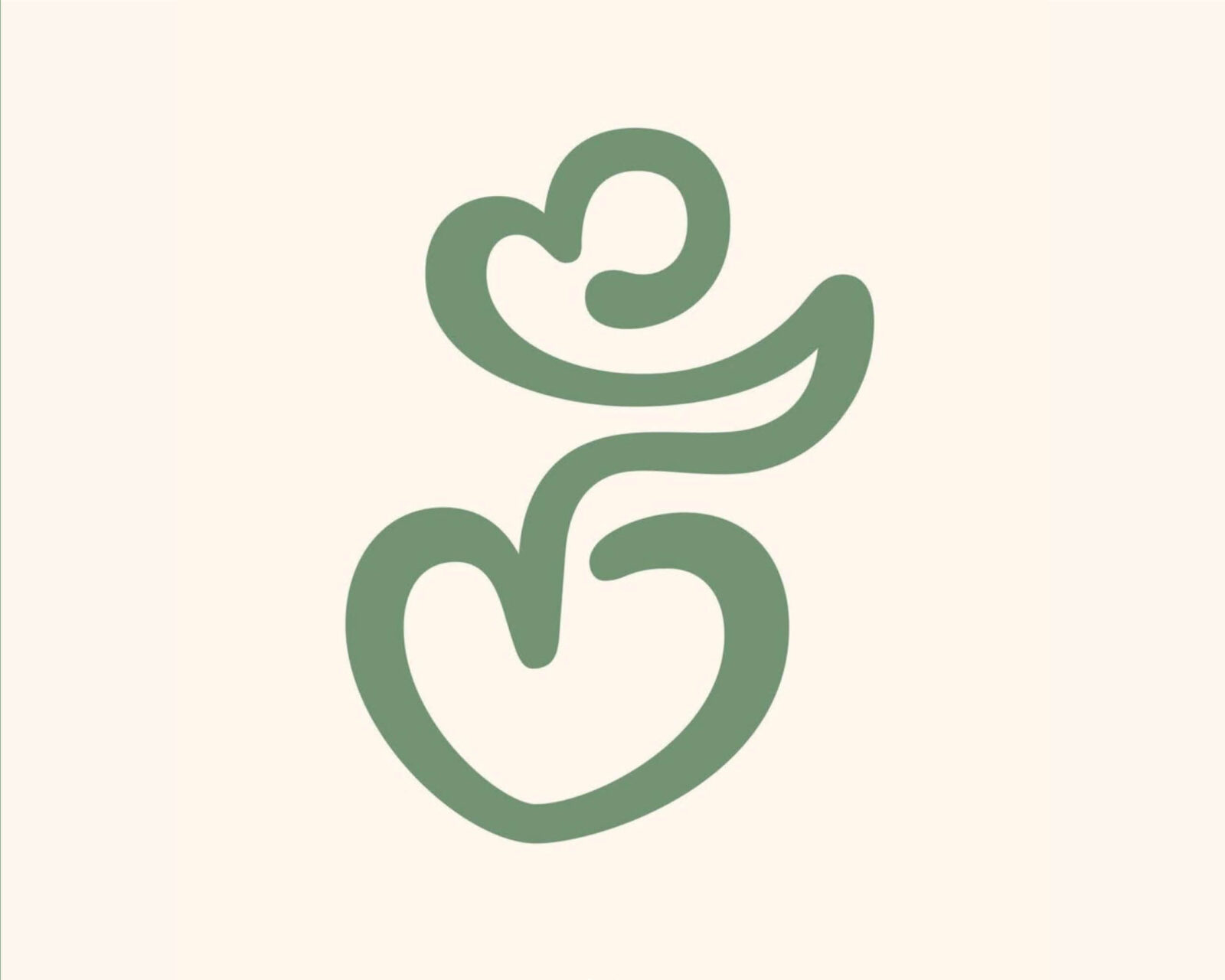
Quature Typeface by Yaprak Buse
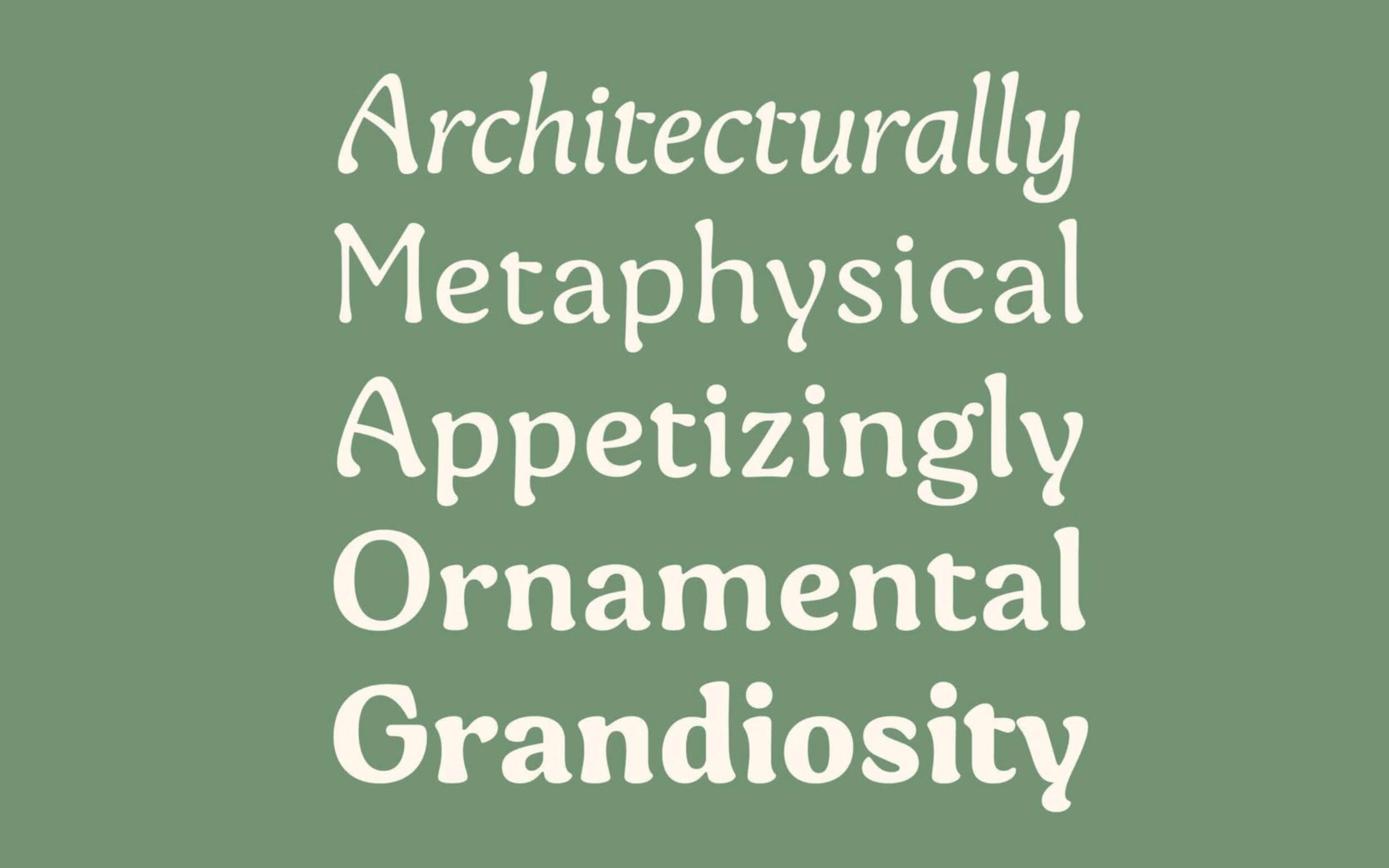
Quature Typeface by Yaprak Buse
Yaprak: There are some nice ongoing initiatives, like Alphabettes or Malee Scholarship. It's open to women, female identifying and non-binary people. I had a merit from Malee scholarship, and I didn't think it would create any impact. But when I went to a ATypI, there were people who recognized my work from there and approached me. And I was very surprised, because I didn't think it had any impact, but it created one droplet in the puddle. It's not very “loud” as such, but I really value the communities as Alphabettes or Malee scholarship.
Olivia: Five years ago my type design and typography professor retired. And a lot of ex-students of his were asked if they would consider applying for the professorship. In the email, they said that they would be especially happy to have female applicants. And I find it a little tricky. On one hand, I was pleased to get this email that was trying to encourage women to apply and on the other hand, it sucks that that's necessary. It's super important to build bridges to parity. I didn't feel up to applying for the full professorship, it wasn’t in Berlin and I have my kids. This little teaching job I have now is very cool. Anja Meiners reached out to me, she's also a type designer in Berlin. And she asked me whether I wanted to have this job that she shared with Natalie Rauch. And she was very explicit that she wanted to ask me also as a woman, not only as a type designer. And I thought that was super cool because that is just making room for more female space in teaching. And I think this is really important. And I would always think, it's great to share knowledge and work and connections with women. There are so many great female type designers, it can’t be hard to find a woman to work with. And maybe this won't be necessary in ten years. But right now, it's still a good thing.
Lisa: When Jakob was going on a baby break, he was teaching in Münster and he said Nils or Lisa could take over. And we both had no experience in teaching and we both had a master in type design. They said “If you both have the same qualifications, we will take Lisa because she's a woman.” And I felt devalued by that, I thought I only got this job because I'm a woman. And then Jakob said “Why? You have the same qualifications, and then you have one point over Nils, that is how it works. And that's a good thing.” Now I understand it's so good to see women in classes. I didn't see it that way then. And when I was looking for somebody to replace me while I was out having my child, I also just asked women because I wanted it to be a woman-led class.
I have a lot of people that come to me and say, “You are a woman, do you know women who can speak on this and this and this?” And then I think “Can you not research on your own? Do I need to tell you?” But It's good that people get called out if they don't look for those angles and it gets more and more important that stages are filled with a lot of different representations. But sometimes I feel weird about it. I need to look at it more like you said: It's actually really cool to see people in those positions.

Olivia: I think it's super important to have women to look up to. And I was just talking with our intern about it, after having read the questions. How to achieve parity if you're not there yet? You can let it evolve and then hopefully just the best people will become professors and the best people will become doctors. At the same time, if you just let it evolve, you do not have these figureheads that make women or non-binary people or whoever, believe that they can be whatever they want to be. Isn't that the basic problem? That's why it's cool to have, non-male networking. It's not against men or it's not against quality, it's about shaping a world that we think is fair. And for that, we need these figureheads.

Laura: In what you were saying Lisa, there's a difference between job offers that are just searching for diversity for the label of it, but the jobs don't yet have the conditions for the diversity that they're searching for. And then they search for women for that position, but there's actually still hierarchies there. And then the women need to do the job of getting rid of these hierarchies. As they ask you to do the job of researching other women, even though they should do it themselves. And then there's this other way of support and complicity that you were talking about. You are aware of this underrepresentation and you're reaching out to others. You're inviting people to a job because you know that the job is there, you can offer something. It's about who does the work – Or about how to create the conditions for people to actually flourish in these jobs and not just be the diversity label.
Edie & Eddy by Lisa Fischbach
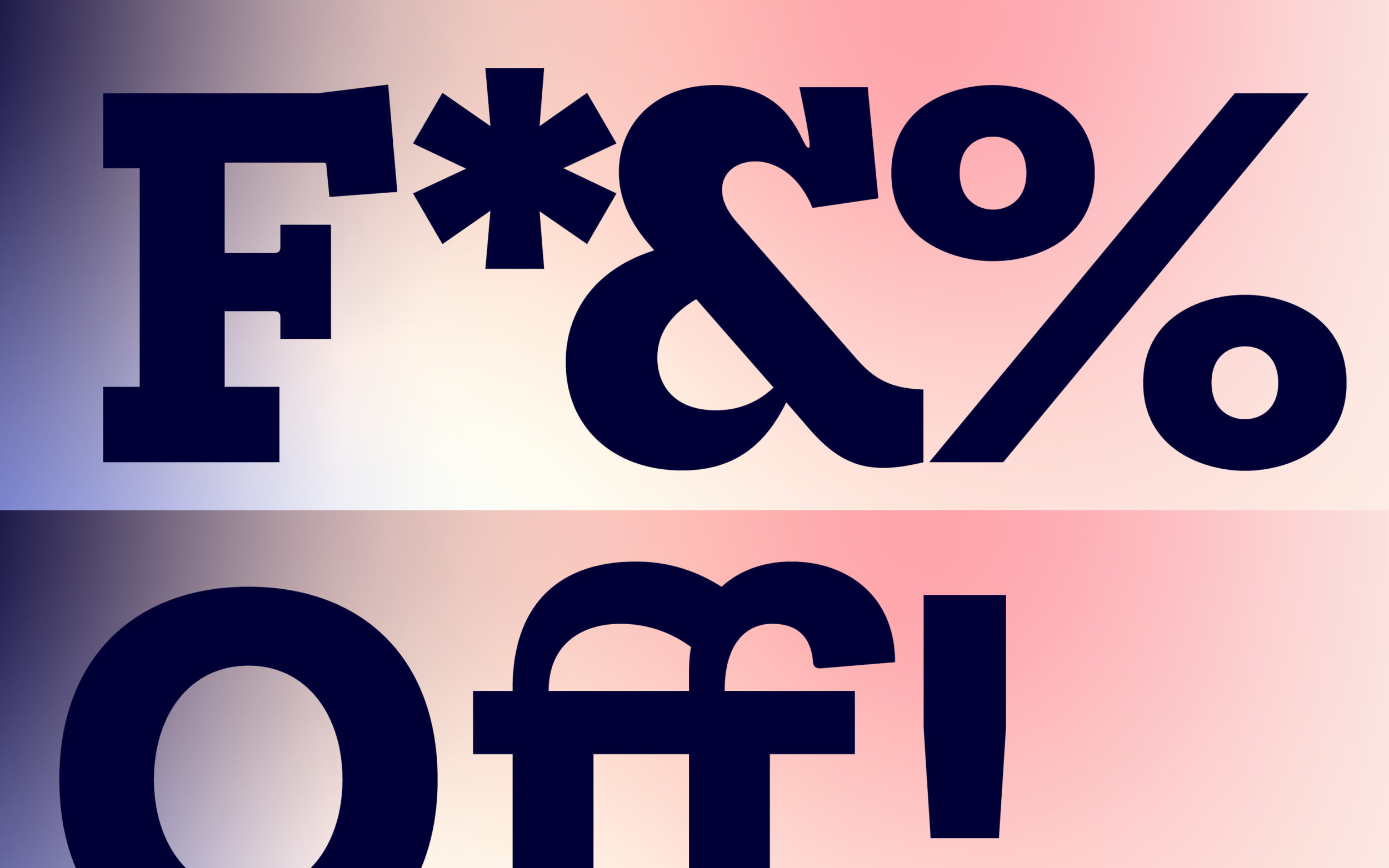
Edie & Eddy by Lisa Fischbach
Do you have any female identifying or non-binary people that you see as your role models in type design?
Lisa: Role models are usually people that I learned from. So for me that would be Fiona Ross as she paved the way for every one of us, especially in the type design field and she's a great teacher. She always had a presence that was just very natural. She knew what she worked for and how she got to the position she was in. But she never defended that. She was always there and just teaching and I really like that. I learned a lot from her. Other than that I'm always a bit envious of all the women type designers, of how cool their fonts are. Doesn’t really matter who is releasing anything, I’m just always thinking “oh shit, I wish I had done that!”. I really enjoy the inspiration, and I'm celebrating that.
Antonia: Actually, if you start thinking about it, you can get a long list of inspiring female type designers! Just to name a few: I think Fiona Ross and Alice Savoie together do a really great job in researching the role of women in type design and also educating their findings and presenting it to the world. These two women are definitely some of the most important ones in this decade. But also Laura Meseguer is a woman, which has a really broad impact on the female side of the type design world.
Yaprak: I don't like the idea of a role model in general. All of the female type designers obviously are doing an incredible job, incredible work. Some that come into my mind are Roxane Gataud. She's an alumni of EsadType and she is the first female type designer I encountered while I was doing my bachelor studies. I never met her. She has accomplished so much, it gives me hope. I have been following the work of Bye Bye Binary and trying to be involved with them. They're very open about what they're doing and about including other people. They're like: “Yeah, okay, let's do something together!” I like that togetherness.
Julia: Last year I was invited to a meeting from Monotype. And yeah, Monotype – huge company, monopol and so on – but I will skip this part. What impressed me was that the creative type director is a woman. She started the opening and it was great. It’s an inspiring shift that she has this position as a woman and brings this female knowledge. I think there's a specific quality in this female energy of doing and looking at things as type design. I liked to see that this woman has this position in a company that is so huge. And on the other hand, I'm the director of the Typodarium and every year I have 300 people who send me emails with a lot of typefaces. Every time a woman writes to me, I love to see what she's doing, where she's working and to see in how many countries all over the world women are working in type design, in so many language systems and disciplines. This is really cool.

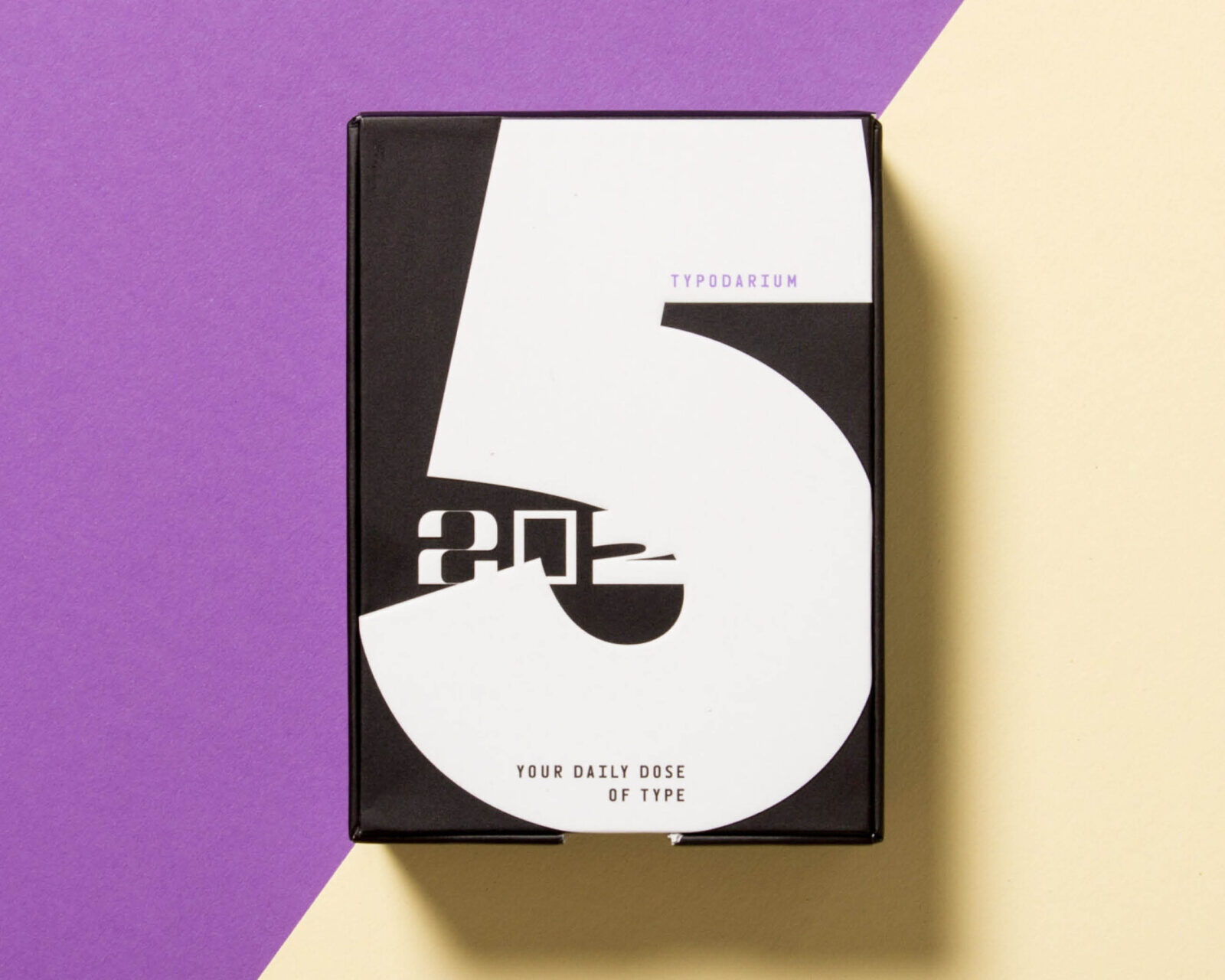
Typodarium
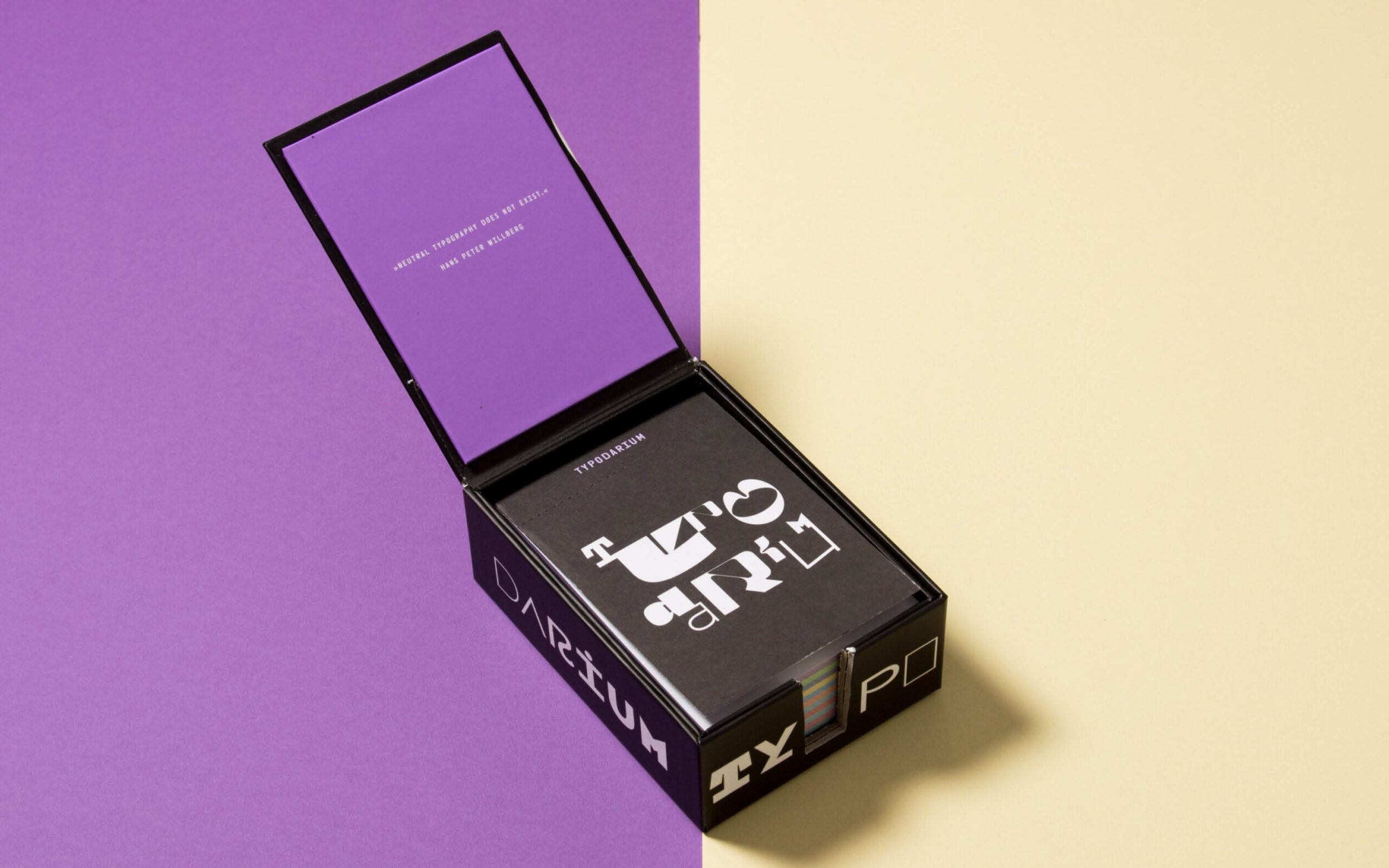
Typodarium
Lisa: It is very interesting that all of us didn't really have an idea immediately: “Who of the 22 do I pick now?” You always have women in the back or in some leading positions, but you don't right away see these impressive people, you have to think twice. It's good that they are there, but why are they so invisible? Why are there not 20 that we can say out of the back of our mind? I realize now, that I always pick people who teach me. In the end of course the teachers are the people that get talked about. I find this an interesting circle to our conversation before.
What is feminist design? How do you create your typefaces to make them more inclusive? How do you create representation?
Laura: You touched upon Bye Bye Binary who are working on non-binary shapes and inclusivity. And then Julia, in your typeface Alsion you have these diversity and gender symbols. Antonia, you work a lot with legibility. For me these are examples of feminist design.
Antonia: I'm curious, how do you relate legibility to feminism?

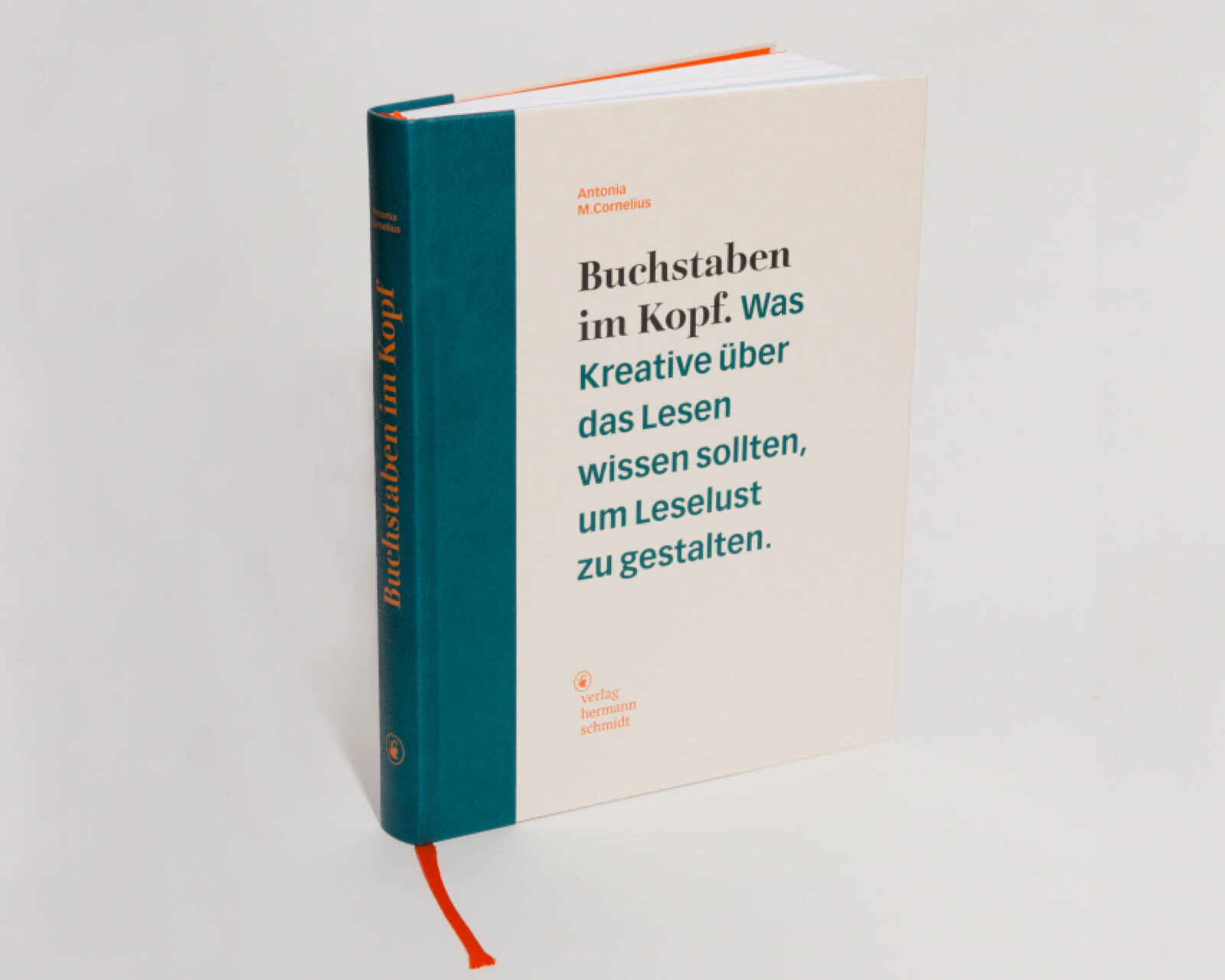
The Letters in My Head by Antonia M. Cornelius
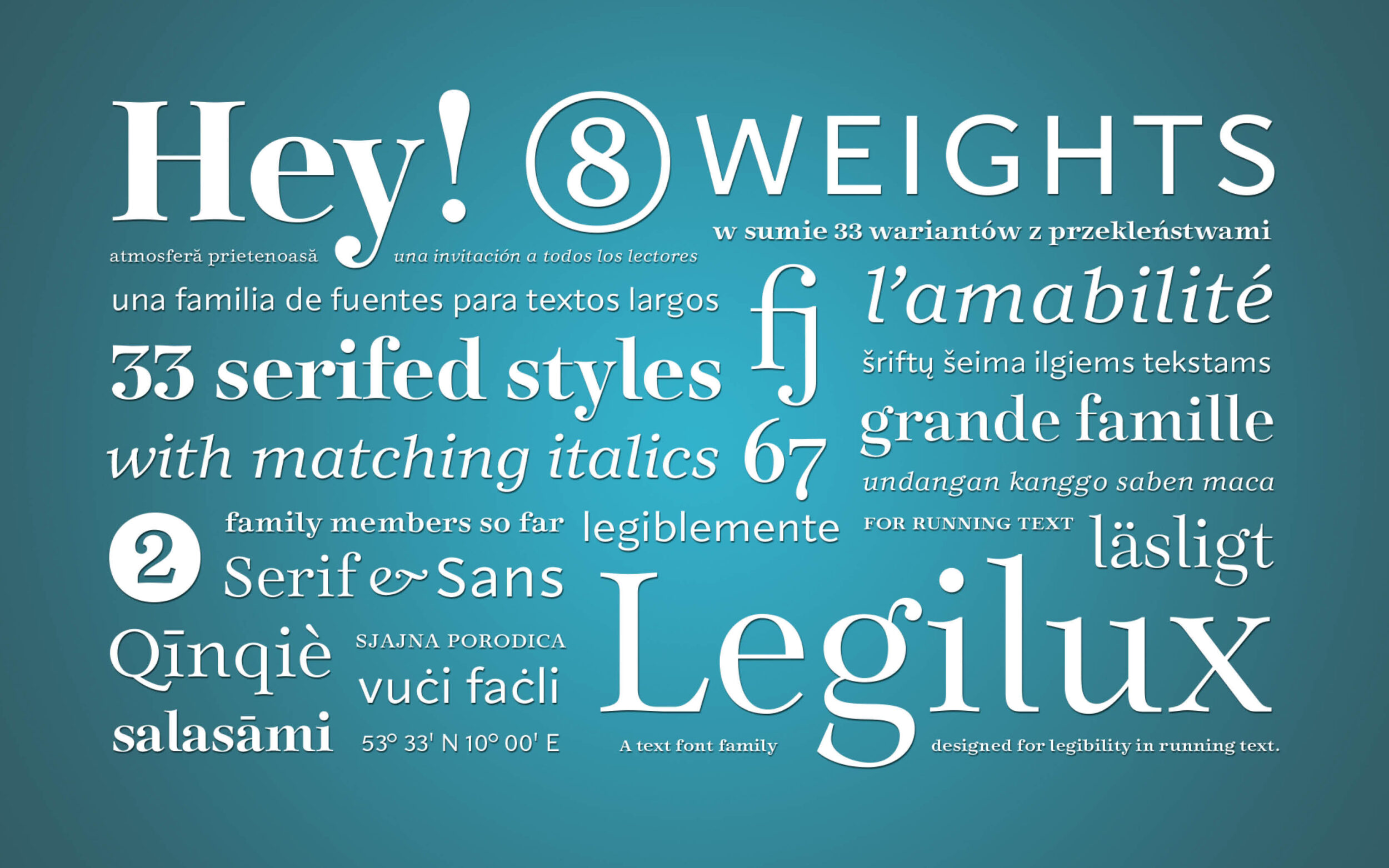
Legilux typeface by Antonia Cornelius
Laura: For me it's about inclusivity and accessibility. Feminism is not about women. Of course there were different waves of feminism in history, but it's actually a movement that wants to create equity. And legibility is something that makes the text or the typeface more inclusive and actually accessible to people. I do relate that to a feminist practice.
Antonia: If I hear the word feminism, I always have the picture of the woman who fights for women. And I'm really not the person. I'm thinking about people. We are all people. And I like a person because of its personality and not because it's a woman or a man or something else. With my legibility topic I want to give a benefit to everybody. To find what helps everybody to read better.

Yaprak: European languages are very much gender centric. There is a feminine, masculine or neutral – as in German. In Turkish, we don't have any genders. When we are learning English, it's a very weird concept for us that we have to call someone “she” or “he”. My best friend is a non binary person. And when I have to call them it's hard because I had to learn afterwards that my friend is a “they”. I think it's weird that we have to differentiate between “he” or “she”. Why can't it be just “it”?
Lisa: In German it's very extreme, there's a lot of different forms for women and for men. And then there is a huge discussion on how to voice or how to rephrase things to address everyone. If you don't have that in your language, is it helpful because nobody thinks in those terms? Or is it not at all, because nobody becomes aware of those things?
Yaprak: I think it's somehow both: I didn't have to think about gender and language for 26 years of my life. Now it's harder for me to create awareness. It wasn't a topic for me at all, but now it is. It is our reality as a global society. It's fluid now, it's a spectrum. In Turkish we say “o” and it refers to “it”. So why can't it be just the person itself? I don't see a feminist design or female design. It's just the design itself.

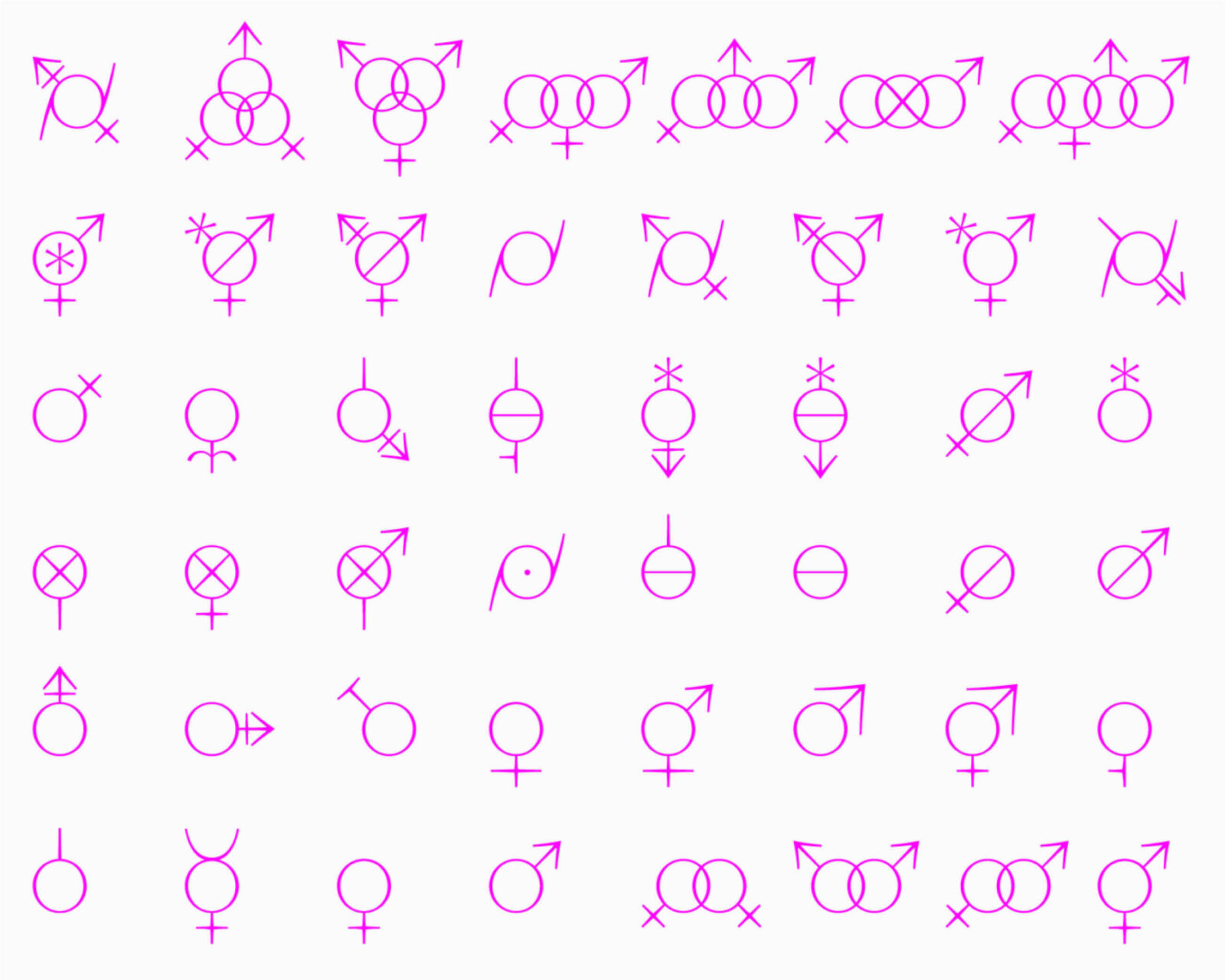
Diversity & gender symbols of Alison by Julia Uplegger
Alison by Julia Uplegger
Julia: I decided to include diversity and gender symbols in Alison, because I wanted to make my own statements with the tools I have, for the position I want to put out there. I live in a very diverse bubble here in Leipzig. In the social area I'm living in, we have a huge discussion for non-binary people, for FLINTA* people, for women. I was working on my two fonts, the Alison Head and the Alison Text. After all these years of passionately working on my first own fonts, I wanted to set a political statement with my possibilities. I think type design can be political in a great way, it can show position. Why can't we accept that there are over 60 different genders? I was shocked when I researched this whole topic and I found no font that had more gender symbols than the standard five. And more than 50 symbols do not even have a Unicode. I had a lot of fun developing this and thinking further from a type design perspective. To ask myself how I would recreate and redesign the symbol from my own perspective, to make it suit the typeface, to give designers a tool and to start the discussion. It is possible that some of the symbols I created could have a different shape in a couple of years. But I think it was worth the extra work just to get the discussion started further and to make a statement that things can be different. Not just to talk about it, but to make the work and to say it could be different. In the hope that this little impact, inspires other designers to do similar work.
Do you want to share any last thoughts?
Lisa: I really enjoyed it. Taking the time for this sometimes falls short, because we’re always busy. It is very valuable to have an exchange.
Olivia: Thank you very much. It was very, very nice to meet you all. Thank you, Julia, for your interesting ideas on all these gender symbols. It's very hard to make a symbol for every gender identity or any identity that is possible. So where to start, where to finish? But I understand what you mean. It's basically just recognizing that there is room for it and asking other people to think about it in a different way. Actually when using the font, you will be confronted with as many possibilities as there are. So I thought that was cool.
Julia: I really enjoyed it as well, to meet you all. And also to get this global feeling, in a way that all of us are in a different city and have a different life. I find it very, very connecting. Over some things that interest us and I really take this feeling with me that I'm not alone. It could also be a starting point for a female type podcast series.
Antonia: Thank you for your initiative to spotlight or work at TypeMates. I think that's a really nice start.
Yaprak: I agree that it was a nice way to see that we're not alone. It was a safe space to talk about some of the interesting topics. Thank you for this initiative, as TypeMates, Laura, Lisa. It was super nice to meet you all.
Laura: Thank you for joining the conversation, I enjoyed it a lot. I felt a sense of community. There was an exchange happening that is very important. One that is actually the exchange we were talking about, that we need more. So maybe, it can be established as a more regular thing.
Lisa: TypeBabes was formed.
Sadly our TypeMates' Natalie Rauch, Mona Franz and Teja Smrekar could not join the conversation. Check out their fonts below!